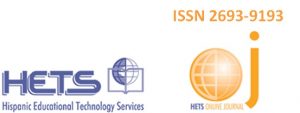An Online Tutorial in Support of English Language Learners.
Associate Professor
Institution: Eugenio María de Hostos Community College of the City University of New York (CUNY)
An Online Tutorial in Support of English Language Learners
Abstract
This paper describes the design and implications of a content-based, interactive, online tutorial aimed at supporting English language learners (ELL) who are navigating both improving their language skills in an English as a Second Language (ESL) program and gaining content knowledge in an introductory discipline-specific course. It describes the tutorial and demonstrates how it is supported by language learning best practices; it also discusses the limitations of the tutorial and provides suggestions for the improvement of its framework and usage.
Keywords: Online Tutorial, English Language Learners, Content-based Instruction, Higher Education
The population of English language learners (ELLs) has been steadily increasing in the past few decades, and recent statistics reveal that this population in the United States will very likely continue to grow (Pereira & DeOliveira, 2015). The literature shows that more educators find themselves teaching students from diverse linguistic and cultural backgrounds (DeJong & Harper, 2005; Brice, Miller, & Brice, 2006). As such, finding ways to educate ELLs is an increasingly important task, and educational institutions are faced with the challenge of creating support tools and utilizing different resources to help teachers better provide for the linguistic and academic needs of a diverse student population. (Zimmerman, 2014).
An effective way educators can support ELLs is by designing materials that will support both content and English language development simultaneously. Harper and DeJong (2004) and Nordmeyer (2007) contend that educators should include ways to address the language demands that ELLs encounter by providing opportunities for students to develop the necessary academic discourse and pragmatic skills which are required to succeed in content discipline classrooms.
Studies show that many [content] teachers do not realize that even the most straightforward classroom language can be perplexing for ELLs and can limit access to learning. Also, content instructors may inadvertently assume that certain communication-based behavior such as use of first language (L1) and/or codeswitching may reflect the students’ inability to perform in English. Such misconceptions may be interpreted as a problem with language comprehension or language production (DeJong & Harper, 2005). Also, content-discipline texts, in addition to vocabulary demands, typically use syntactic structures which may be new, and therefore challenging, for second language (L2) learners’ level of proficiency. Especially notable, DeJong and Harper (2005) mention that the national content standards describe the knowledge base of the content area and good teaching practices but fail to explain the linguistic foundation underlying these effective content classrooms.
Typically, introductory college level courses cover a large amount of material in order to prepare students for upper level courses; therefore, these courses tend to have a faster pace and can be quite challenging for ELLs who need more time to process complex concepts as they are at the same time managing the acquisition of a second language as well. This is reflected in Nordmeyer’s (2007) and Zimmerman’s (2014) research which concludes that ELLs face many challenges, but their biggest difficulty is learning academic content.
Online Tutorial
Because an online tutorial is an effective learning tool that can be designed to support the acquisition of both language and content knowledge, it is ideal for addressing the specific needs of ELLs. Indeed, Bollinger and Supanakorn (2010), Ganster and Walsh (2008), and Bianco (2005) state that because online interactive tutorials can be designed to meet specific academic needs, their integration as supplements has become popular and can be successfully used. Online interactive resources can provide students with rich, learning environments that appeal to different learning styles and offer learners a chance to explore and construct their own knowledge actively and at their own pace (Bollinger & Supanakorn, 2010) and (Moreno & Meyer, 2007), and (Lambrindis, 2014). Curtin (2002) also adds that the use of technologies offers flexible delivery.
To this end, this paper describes the design and implications of a content-based, interactive, online tutorial meant to support English language learners who are navigating both improving their language skills in an English as a Second Language (ESL) program and gaining content knowledge in an introductory discipline-specific course at Eugenio María de Hostos Community College. As part of its mission, Hostos College “takes pride in its historical role in educating students from diverse ethnic, racial, cultural and linguistic backgrounds, particularly Hispanics and African Americans. An integral part of fulfilling its mission is to provide transitional language instruction for all English-as-a-Second-Language learners along with Spanish/English bilingual education offerings to foster a multicultural environment for all students” (“Hostos Mission,” 2017).
Description of Process
As a direct way to both support the language and content knowledge needs of ELLs, an online content-based tutorial that students can access at their convenience was created. The project was divided into several phases. In the first phase, the introductory sociology course was selected for the tutorial because it was very popular with ESL students as it fulfills a general education requirement for most majors at the College, and it can be taken in either the intermediate or advanced level of ESL. Once this selection was made, the overall idea of a sociology tutorial was presented to the Instructional Technology staff to assess its feasibility. The tutorial’s framework was then conceptualized. The second phase of the project entailed meeting with the experts in the field of sociology. Because this discipline contains a large amount of content, sociology professors helped identify essential topics from the introductory course. Keeping ELLs in mind, particular attention was given to concepts that are taught within a structure that requires scaffolding; this refers to ideas that are fundamental and should be clearly understood before more complex concepts in the field are introduced. Once these concepts were identified, it was established that the majority of the concepts emerged from the first four chapters of the textbook Sociology: A Brief Introduction by Richard Schaefer; as such, a decision was made to focus on the primary sociological concepts in the introductory chapters in the textbook as these are useful for understanding material presented in subsequent chapters. These chapters were closely examined and, in consultation with the sociology experts, appropriate and meaningful readings and exercises were developed. These exercises were designed within a language acquisition context and aim to meet the specific language and content needs of ELLs. In the last phase, the online tutorial was produced with the help technology experts at the College. The tutorial appears on the Department of Language and Cognition webpage and can be conveniently accessed by all students in the College at any time and from any place. Students log on using their College identification; they can work on chapters sequentially or selectively. When students log off, they are asked to respond to an evaluation which is forwarded automatically via email to my College inbox.
The tutorial begins with a welcome page that introduces users to its purpose and provides suggestions for usage as individuals, in pairs, or small groups. Additionally, the page describes the format of the tutorial and directs users to the table of contents, which shows its chapters with their topics, subtopics, and exercises. The tutorial also reinforces material with a review component for each topic as suggested by August, Carlo, Dressler and Snow (2005). Lastly, when students log out of the tutorial, they are directed to the aforementioned evaluation page, which contains questions aimed at collecting data related to the tutorial’s effectiveness and its users. In particular, the evaluation questions address students’ enrollment status and ESL level as well as their overall experience (see Figure 1).
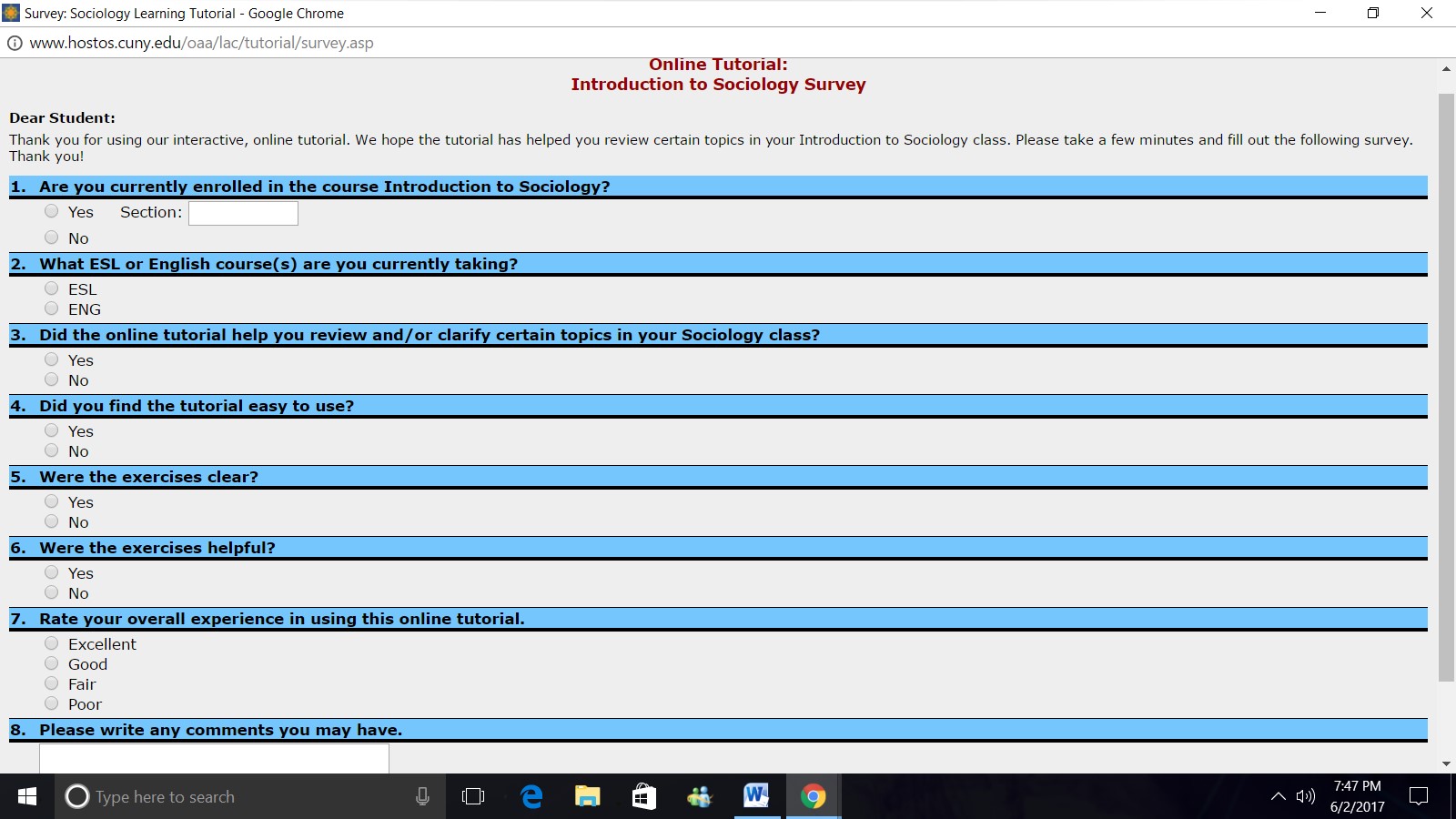 Figure 1. The evaluative component of tutorial. The depicted survey aims to collect data regarding the tutorial’s users and its effectiveness.
Figure 1. The evaluative component of tutorial. The depicted survey aims to collect data regarding the tutorial’s users and its effectiveness.
Tutorial Samples
The tutorial incorporates many skills which are recognized as essential to helping language learners achieve academic success; these include effective reading comprehension, use of academic content vocabulary, and critical thinking. In particular, the exercises designed for the tutorial address skills such as interpreting, connecting, applying, and evaluating. The selected content topics are introduced in reading passages, which increase in length and complexity as the tutorial progresses. Students can freely navigate these reading selections, as well as the exercises that accompany them, as often and repetitiously as they want; there are no restrictions in terms of order, pace or topic selection. The tutorial, designed purposefully to allow recursive learning, is meant to be a vehicle for students to explore and learn the content material in a way that is meaningful to each individual student.
All reading selections are presented with a scrolling bar that allows students to easily navigate each reading back and forth. Also, the arrows allow students to review previous or next topics as they move through the tutorial, permitting students to move forward and back in the scaffolding process. Students click the “Start” button when they want to begin the exercises related to the reading. Figure 2 shows an example of a reading selection and illustrates the workings of a page containing a reading in the tutorial.
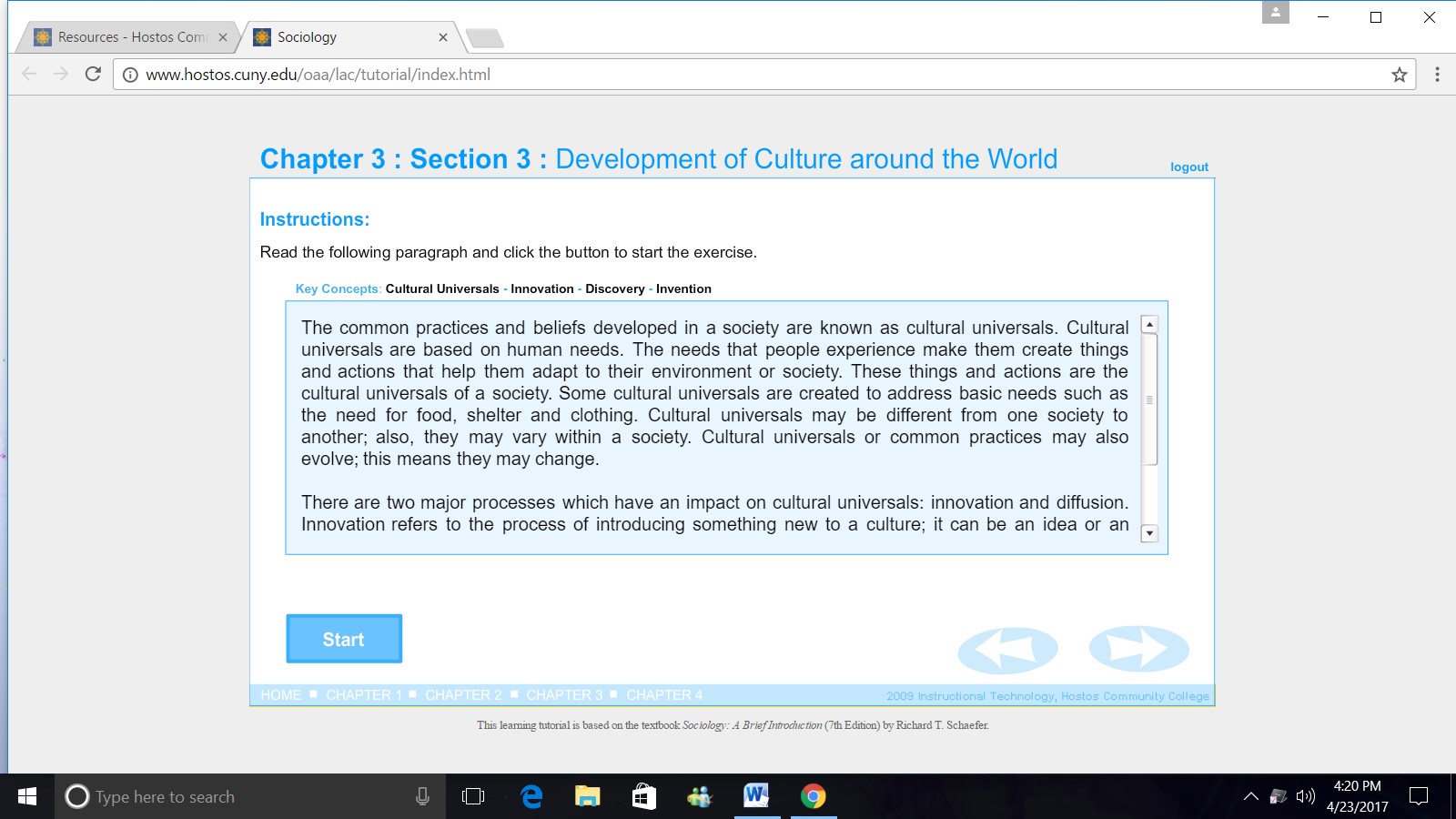 Figure 2: Sample Reading. The figure illustrates the design of a tutorial page containing a reading selection.
Figure 2: Sample Reading. The figure illustrates the design of a tutorial page containing a reading selection.
There are several types of comprehension exercises that accompany each reading. For example, cloze exercises are meant to measure how well students comprehend the reading passage as they required students to recall and produce details of the reading. This assessment tool provides empirical evidence regarding reading comprehension. To complete the cloze exercise, students need to click and drag responses into the paragraph in the provided spaces. They will receive immediate feedback as viewed in figure 4 and can continue the exercise if corrections are necessary.
A matching column exercise is best suited for testing both knowledge and comprehension; this type of exercise challenges students to use analytical skills including logic, process of elimination, inversion and diversion. The exercise in the tutorial has a drop-down menu to select the matching letter from the provided definitions.
Additionally, a true or false exercise helps students employ critical reading skills, helping them differentiate between main ideas and details, recognize inferences by constructing meaning, and consider different responses; this type of exercise is designed to measure the ability of students to evaluate the accuracy of specific statements. Other comprehension tasks designed for the tutorial include exercises where students are asked to identify correct answers from drop menus. Tutorial users receive instant feedback for all exercises, allowing users to immediately assess answers. The tutorial’s immediate feedback mechanism provides students with the necessary space to make iterative improvements in the learning process; instant feedback is significantly beneficial in promoting learning achievement. In some cases, explanations are provided through pop-up menus, and in all exercises, students have the opportunity to re-examine and re-try. Figures 3 through 9 illustrate examples of some the exercises and types of feedback in the tutorial.
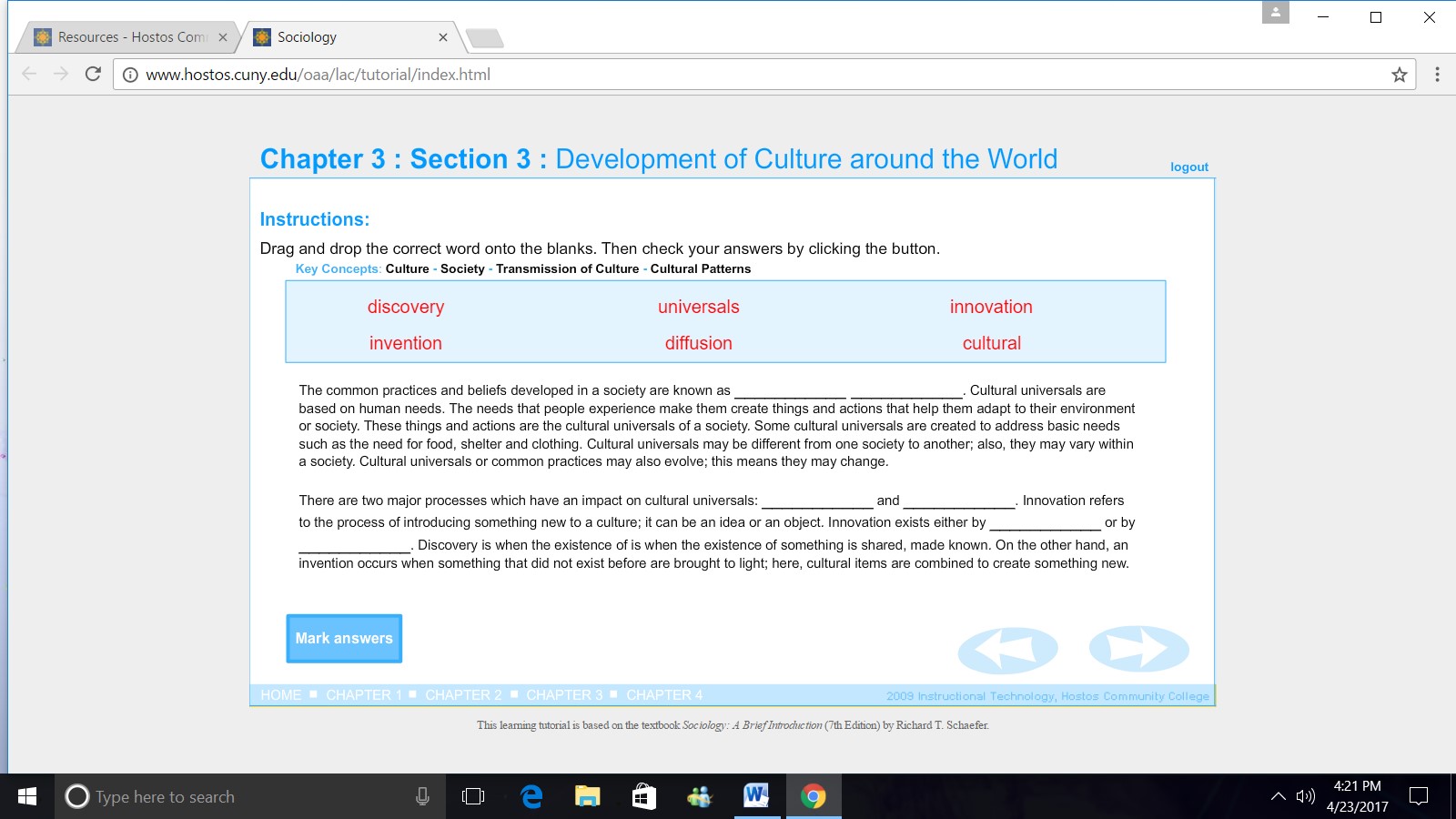 Figure 3. Sample of cloze exercise.
Figure 3. Sample of cloze exercise.
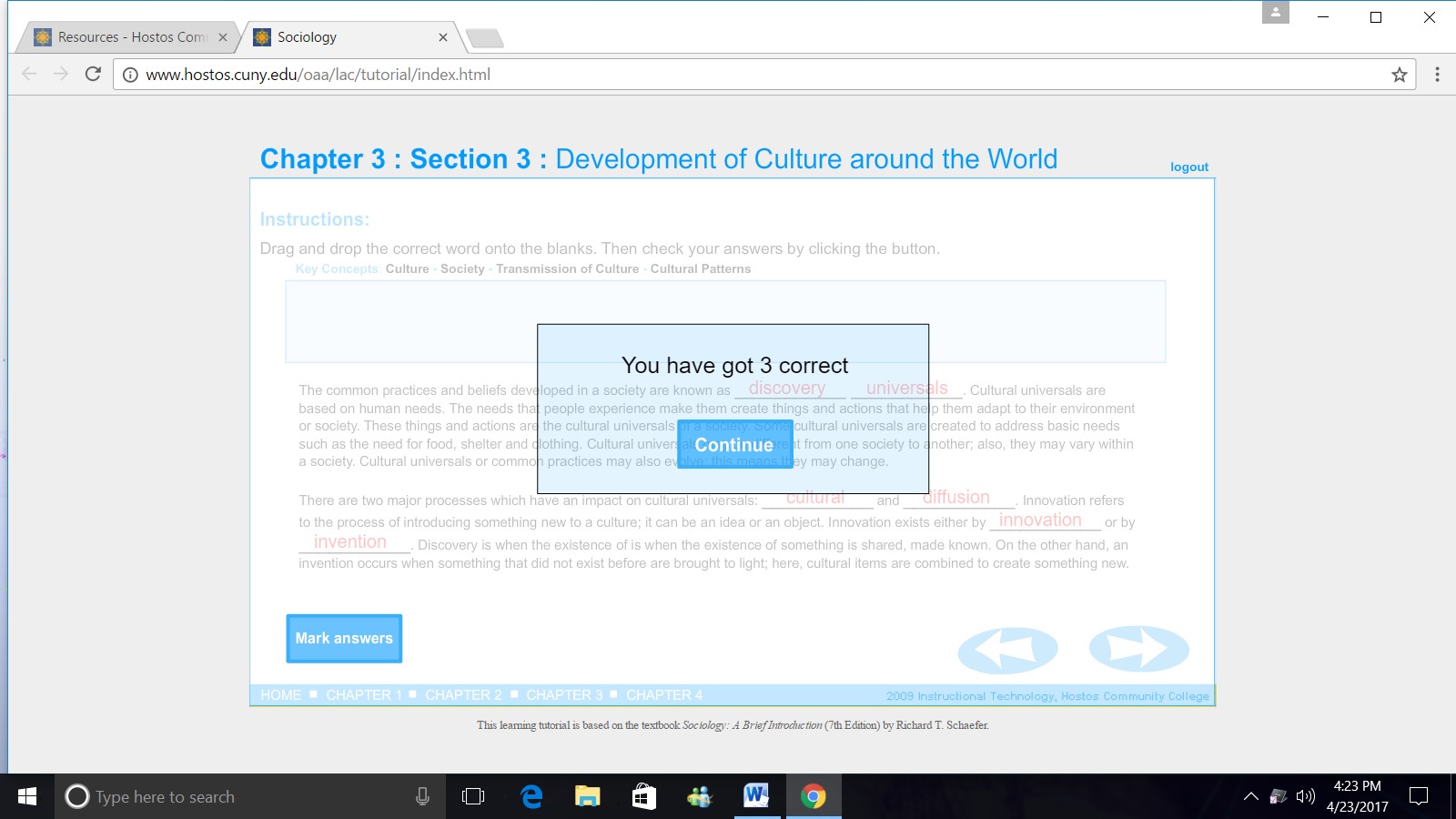 Figure 4. Sample of feedback for cloze exercise.
Figure 4. Sample of feedback for cloze exercise.
 Figure 5. Sample of matching column.
Figure 5. Sample of matching column.
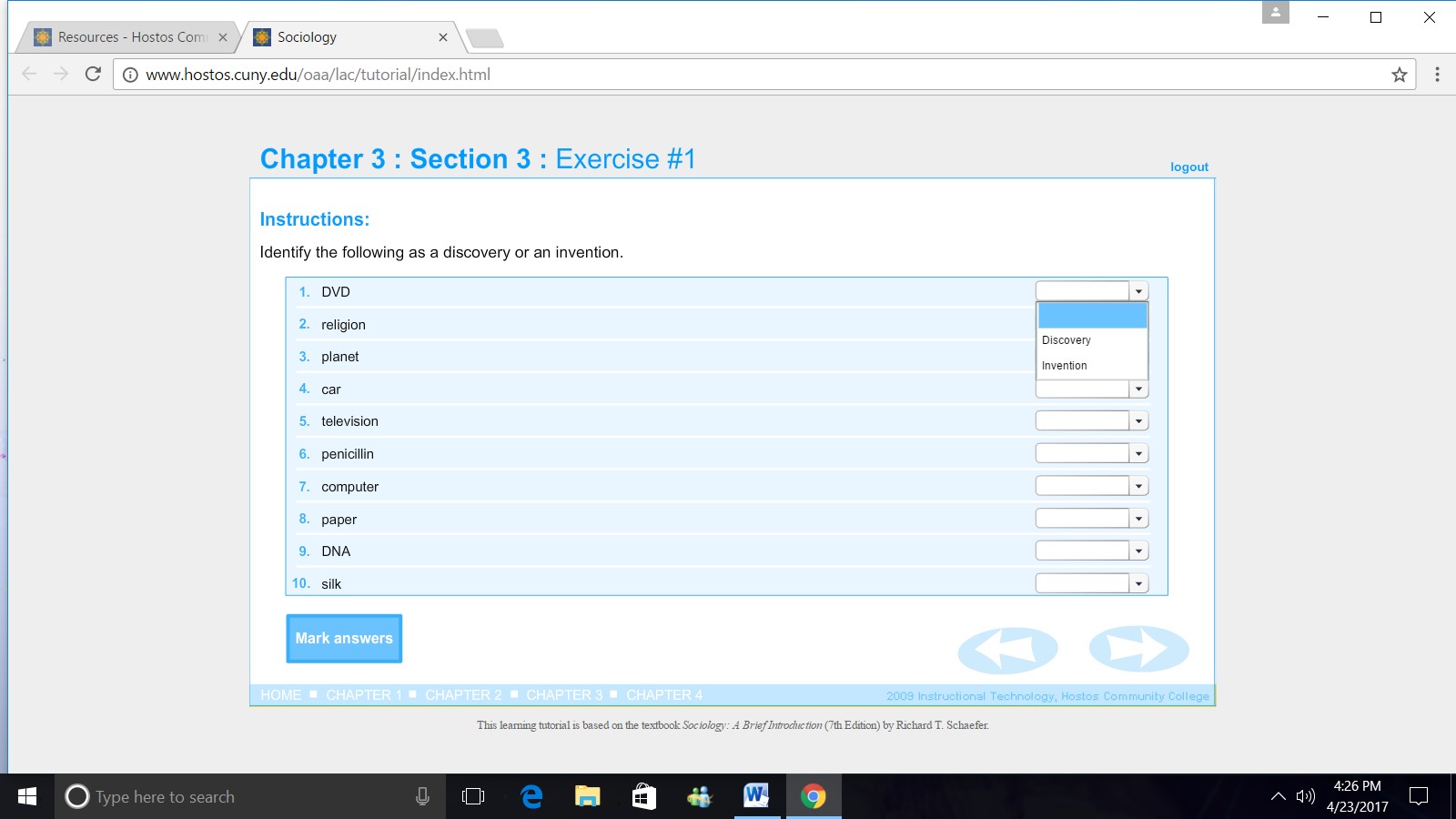 Figure 6. Sample of identify correct answer exercise with drop menu.
Figure 6. Sample of identify correct answer exercise with drop menu.
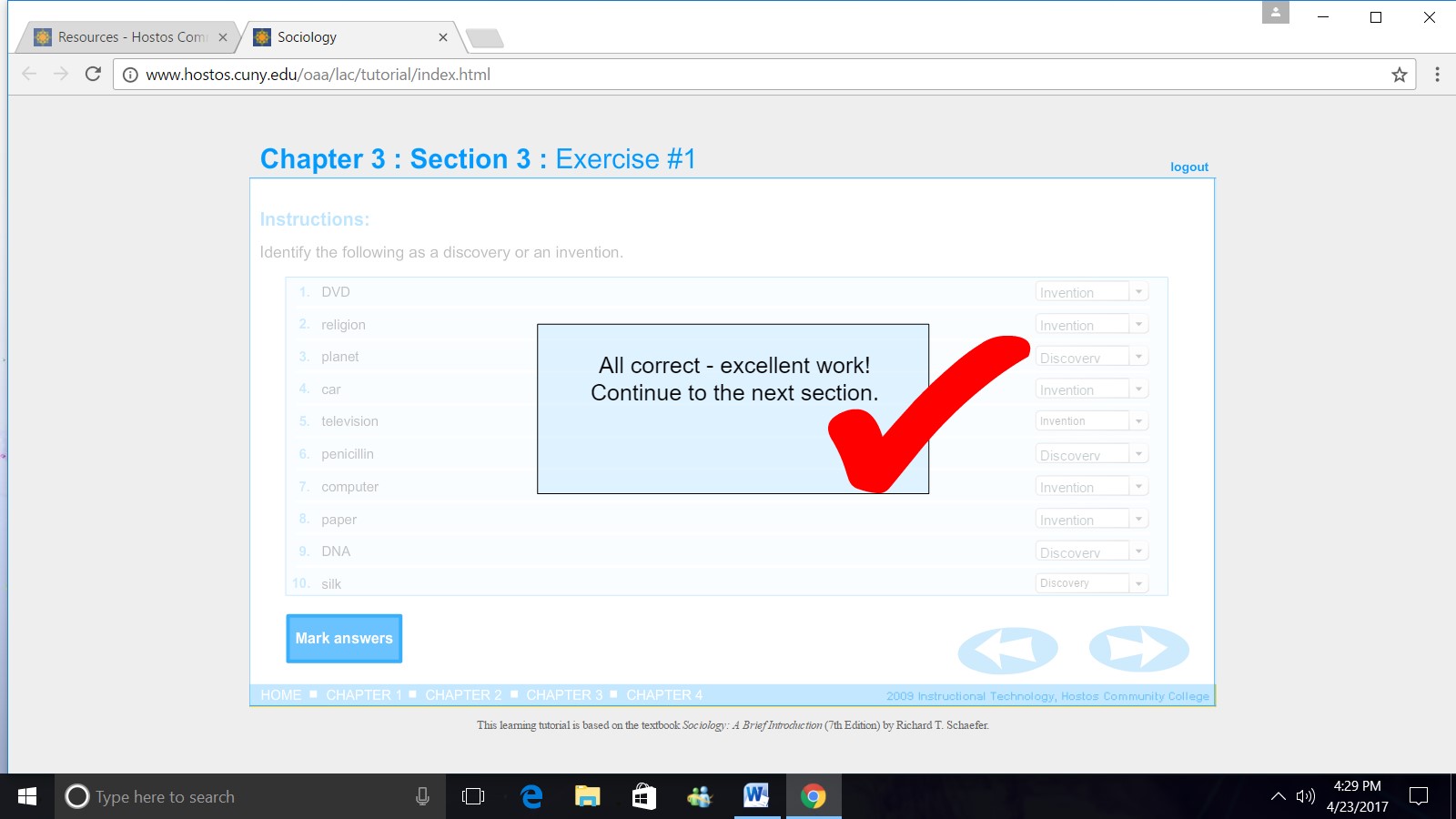 Figure 7. Sample of feedback for identify correct answer exercise.
Figure 7. Sample of feedback for identify correct answer exercise.
 Figure 8. Sample of multiple choice exercise.
Figure 8. Sample of multiple choice exercise.
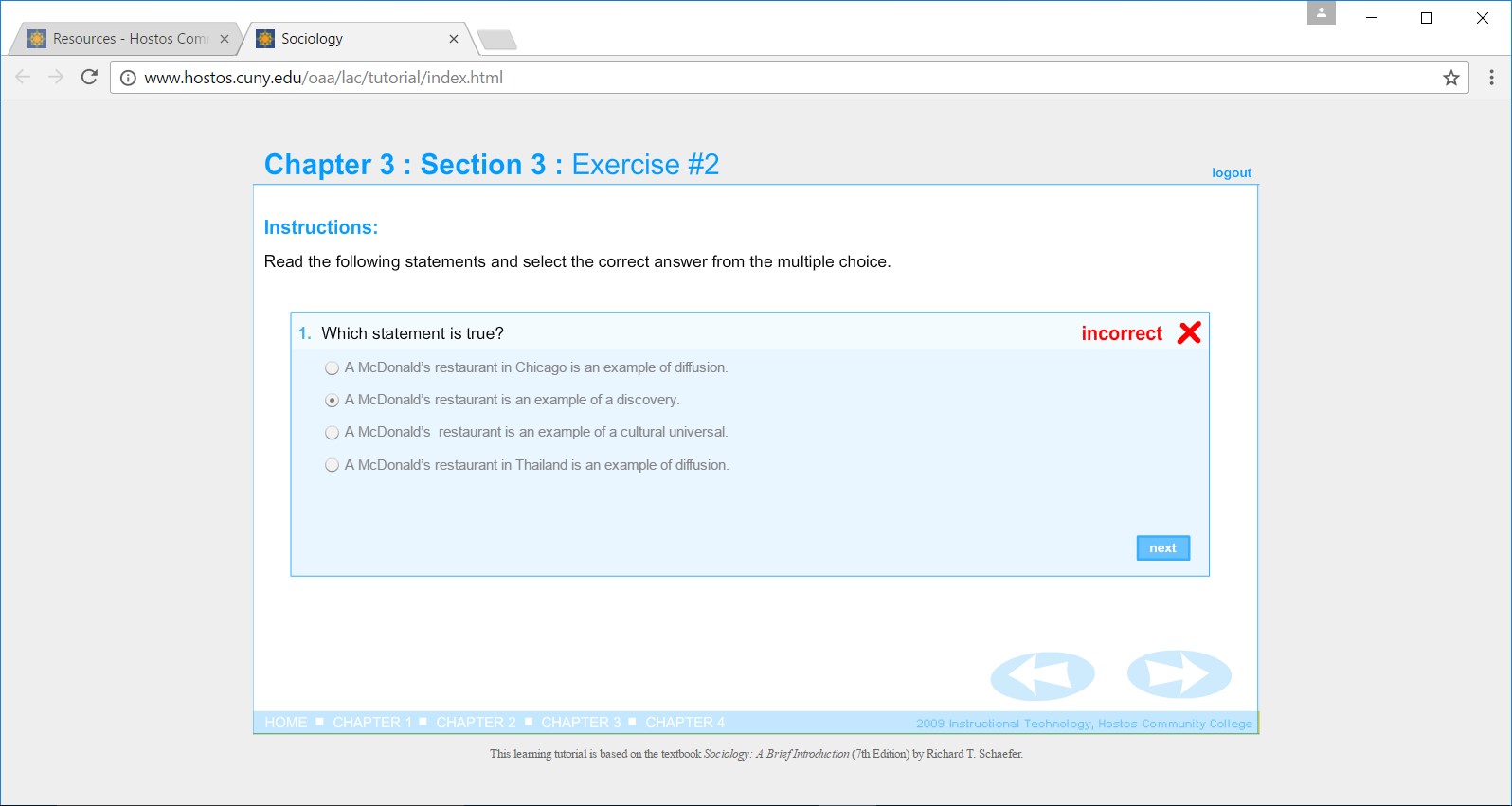 Figure 9. Sample of feedback for incorrect response in multiple choice exercise.
Figure 9. Sample of feedback for incorrect response in multiple choice exercise.
Discussion and Recommendations
While positive feedback has been received from tutorial users, the data is not, at this point, sufficient to warrant formal reporting. Therefore, it is necessary to explore methods that will ensure better data collection as a way to inform any amelioration of tutorial usage as well as gain an informed understanding about the experience. The tutorial can also be enhanced by incorporating visual and audio clips to enrich the users’ experience; adding these features can also serve to complement and/or accommodate different learning preferences.
Another significant consideration regards viewing the tutorial as a diverse tool that can have a variety of purposes. When the tutorial was originally conceptualized, it was constructed as a tool that students can use on their own time, but it can also be employed as an effective in-class instrument to reinforce concepts and/or assess comprehension. Considering the tutorial in this way can result in numerous innovative and successful in-class activities.
Also, when designing a similar tutorial, it is of utmost importance to consider the compatibility of the application used to construct the tutorial and the server on which it operates. This is crucial to ensure the tutorial is operational, especially when the server is upgraded. Like all technology, servers become obsolete over time and may lose their compatibility with specific applications.
Lastly, the use of online tutorials seems to have a positive effect on learning and the overall improvement on the students’ level of understanding of materials. (Bollinger, Supanakorn, 2010.) As such, a consequential step would be to consistently collect and analyze all pertinent data related to the tutorial. This evidentiary information can provide insight into the usefulness, amelioration and sustainability of the tutorial. In addition to the evaluation at the end of the tutorial, a focus group may also supplement the assessment process and the analysis of its use as it can yield additional constructive information. Another consideration in this respect would be to also collect data from the instructors as well, allowing for both educator and learner to provide perspectives about the tutorial effectiveness, thus, contributing to a more comprehensive analysis of the tutorial experience. Such information may prove instrumental in deciding to develop more tutorials in other content areas, which, in turn, will result in fostering more collaboration across disciplines.
Conclusion
The integration of technology is an important addition to traditional teaching and can be an effective learning tool. There are many advantages for using online tutorials; they can eliminate concerns about making mistakes and producing under pressure within the structure of a conventional classroom. Another benefit of an online tutorial as a learning tool is that its usage further enhances student engagement and strengthens independent learning skills, and in particular, it helps students who are learning a language meet the demands of the content classes by providing an opportunity to interact with academic vocabulary as they gain a solid base of content knowledge.
References
August, D., Carlo, M., Dressler, C., & Snow, C. (2005). The critical role of vocabulary development for English language learners. Learning Disabilities Research and Practice, 20, 1, 50-57.
Bianco, C. (2005). Online tutorials: Tips from the literature. Library Philosophy and Practice, 8, 1, 1-6.
Bollinger, D. U. & Supanakorn, S. (2010). Learning styles and student perception of the use of interactive online tutorials. British Journal of Educational Technology, 42, 3,470-481.
Brice, A. E., Miller, K. J., & Brice, R. G. (2006). Language in the English as a second language and general education classrooms: A tutorial. Communications Disorders Quarterly, 27, 4, 240-247.
Curtin, J. (2002). WebCT and online tutorials: New possibilities for student interaction. Australasian Journal of Educational Technology, 18, 1, 110-126.
DeJong, E. J. & Harper, C. A. (2005). Preparing mainstream teachers for English-language learners: Is being a good teacher good enough? Teacher Education Quarterly, 23, 2, 101-124.
Ganster, L. A. & Walsh, T. R. (2008). Enhancing library instruction to undergraduates: Incorporating online tutorials into the curriculum. College and Undergraduate Libraries, 15, 3, 314-333.
Harper, C. & DeJong E. (2004). Misconceptions about teaching English-language learners. Journal of Adolescent and Adult Literacy. 48, 2, 152-162.
Hostos Community College. (20017). College mission statement. Retrieved from www.hostos.cuny.edu/About-Hostos/Our-Mission
Lambrinidis, G. (2014). Supporting online, non-traditional students through the introduction of effective e-learning tools in a pre-university tertiary enabling programme. Journal of Higher Education Policy and Management, 36, 3, 257-267.
Moreno, R. & Meyer, R. (2007). Interactive multimodal learning environments. Educational Psychology Review, 19, 309-316.
Nordmeyer, J. (2007). Balancing language and content: Teaching English language learners in the 21st Century. International Schools Journal, 27, 1, 64-70.
Pereira, N. & DeOlivera, L. C. (2015). Meeting the linguistic needs of high-potential English language learners: What teachers need to know. Teaching Exceptional Children, 47, 4, 208-215.
Zimmerman, K. (2014). A literature review of the challenges and best practices for English language learners. National Forum of Multicultural Issues Journal, 11, 1-8.
Trackback from your site.
